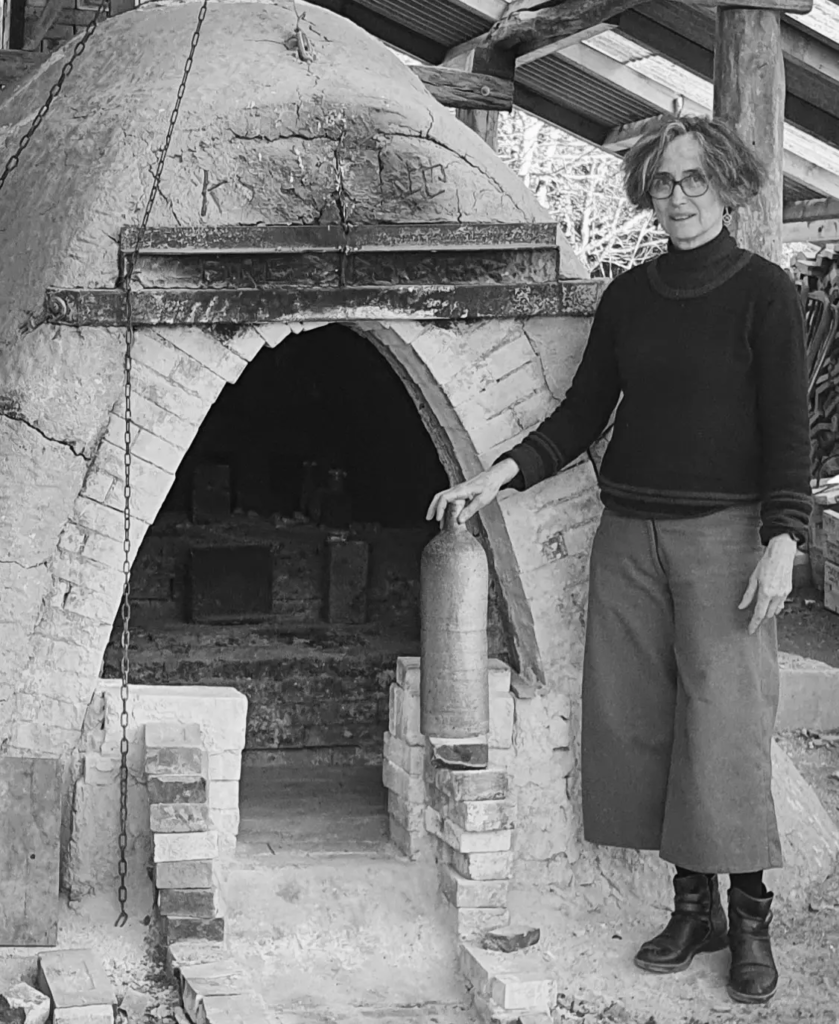
The art of ceramics allows the creator to fashion forms as essential as a pebble, a gust of wind, a puddle of water, the sun shining through foliage. Brigitte Chassang’s works draw their inspiration and envision their future as a sensitive transformation of cultural and natural elements. The technique of stoneware or porcelain fired with wood requires mastery, a particular experience. From the origin of each piece, the story told by wood-firing is invited.
The strength of the works lies in the balance between the proposed form and the contribution of fire.
The very tall vases, or Kore (female figures in Archaic Greece), with great sobriety, have a twist halfway up like a carving, a movement, and for each piece, the richness of the fire makes its simplicity or subtle momentum moving in the light.
The Satchmo series, vases whose shape is thrown and then pushed and molded from the inside, proceeds from a dialogue with oriental Neolithic ceramics. On these forms, the motif of leaf or feather imprints breaks the roughness of the “bark”. The turned neck nuances the modeling of the body and contributes to the calmness and balance of the piece.
The continuation of this research has led to the Orcelles series, where the modeled body is raised by a foot responding to the neck, which can be perceived as a passage through the form, or a stacking. In this series, there is evidence of construction. One can see intentions and volumes close to certain modern architectures and sculptures (Mario Botta, Henri Gaudier Brzesca).
Rising from three points, the large tripod vases continue the dialogue with ancient Chinese or Pre-Columbian ceramics. If isostasy (three points of support) is a guarantee of stability, it also allows the stretching of the form, an evident relationship between solid and void, and profiles with surprising modulations.
Everyday ceramics: bowls, cups, teapots, pitchers, possess spatial qualities while fully meeting their purpose. Thus, porcelain bowls with 5, 6, or 7 faces constructed in a spiral motion (or for some, a more rigorous geometry) offer a pearly whiteness punctuated with pink, gray, and matte brown. In use, these apparently austere objects of daily life slowly reveal their great richness of form, color, and texture.
-Serge Landois